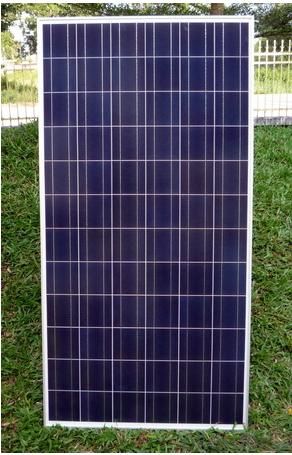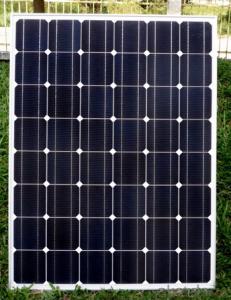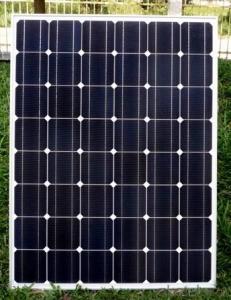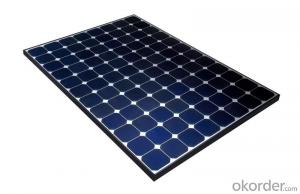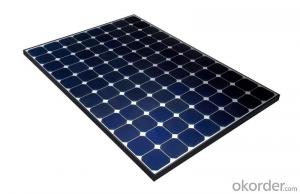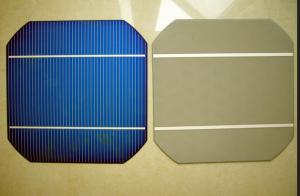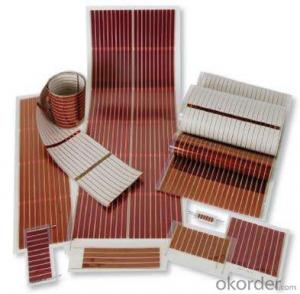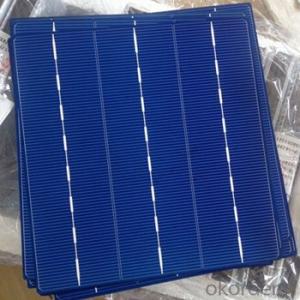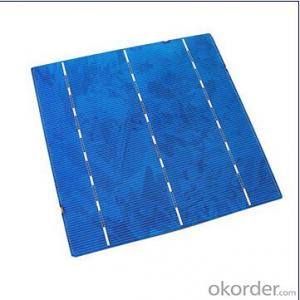Small Solar Cells for Sale - CNBM Poly 150W Solar Panel with ISO Certificate for Residential
- Loading Port:
- Tianjin
- Payment Terms:
- TT OR LC
- Min Order Qty:
- 100 watt
- Supply Capability:
- 20000 watt/month
OKorder Service Pledge
OKorder Financial Service
You Might Also Like
Specification
CNBM Poly 150W Solar Panel With ISO Certificate For Residential
Introduction
This is a kit using for factory and storage field. this product is a higher output version with stable power and we guarantee you for 20years.

Suggested application
Home lighting business lighting,
Garden lighting, pavement lighting
Farmer household lighting
Decorative water pump
Traffic signal lighting
industry area
business area
Solar Power Plant
Product feature
he modules are made of Monocrystalline or Polycrystalline Silicon cell.
Materials and color of the solar panel frame: Clear anodized aluminum alloy type 6063T5 Universal frame; Silver-white color;
The output connection gathers the coupling: Selects conforms to the IEC-612615; 2005, class II, IEC61730 international standard; Airtight waterproofing binding clamp;
Module seal structure: The surface is thick, the high diaphanous rate armored glass with solar cell board special-purpose 3.2mm becomes after the high temperature lamination craft. The back selects has waterproof and anti- aged performance fine TPT materials. The entire block battery board has, the waterproofing, the anti- aging airtight and so on the fine performance;
Power tolerance: +/-3%
Packaging
International standard cartons(according to the requirements of customers )
- Q: How do solar cells perform in areas with high levels of humidity?
- Solar cells can still perform efficiently in areas with high levels of humidity. However, excessive moisture in the air can cause a slight decrease in their overall performance due to increased resistive losses. It can also lead to the formation of water droplets on the surface of the solar panels, which can temporarily block sunlight and reduce energy production. To mitigate these effects, solar panels are typically designed to be water-resistant and have anti-reflective coatings to prevent water droplet formation. Overall, while humidity can have a minor impact on solar cell efficiency, it does not significantly hinder their ability to generate electricity.
- Q: Can solar cells be used in powering communication networks?
- Yes, solar cells can be used to power communication networks. Solar cells convert sunlight into electricity, which can then be used to power various devices and systems, including communication networks. This makes solar energy an environmentally friendly and sustainable option for powering these networks, especially in remote or off-grid locations where access to traditional power sources may be limited.
- Q: What is the role of tracking systems in maximizing solar cell efficiency?
- Tracking systems play a crucial role in maximizing solar cell efficiency by continuously adjusting the position of solar panels to optimize their exposure to sunlight. These systems enable solar panels to track and follow the sun's path throughout the day, ensuring that they are always facing directly towards the sun. By doing so, tracking systems can enhance the amount of sunlight captured by solar cells, resulting in increased energy production and overall efficiency.
- Q: Can solar cells be used to power electric fences?
- Yes, solar cells can be used to power electric fences. Solar cells convert sunlight into electricity, which can then be used to charge a battery. This stored energy can be used to power the electric fence, making it an eco-friendly and cost-effective solution.
- Q: How do solar cells handle snow or ice buildup?
- Solar cells do not handle snow or ice buildup well. When covered by snow or ice, solar cells are unable to absorb sunlight effectively, leading to reduced energy production. To prevent this issue, solar panels are often installed at an angle, allowing snow and ice to slide off more easily. Additionally, some solar systems use heating elements to melt snow or ice that accumulates on the panels.
- Q: Can solar cells be used in countries with limited sunlight?
- Yes, solar cells can still be used in countries with limited sunlight. While solar cells generate the most electricity under direct sunlight, they can still generate power even in cloudy or overcast conditions. Additionally, advancements in solar panel technology have made them more efficient in capturing diffuse sunlight, enabling their use in regions with limited sunlight.
- Q: Can solar cells be used in educational institutions?
- Yes, solar cells can be used in educational institutions. They can be used to generate clean and renewable energy, which can help reduce the institution's carbon footprint and energy costs. Additionally, solar cells can serve as an educational tool, allowing students to learn about sustainable energy sources and the importance of environmental conservation.
- Q: How do solar cells handle power fluctuations?
- Solar cells handle power fluctuations through a process called maximum power point tracking (MPPT), which optimizes the output power of the cell. MPPT algorithms continuously monitor the voltage and current of the solar cell and adjust the load resistance to ensure that the cell operates at its maximum power point, even in the presence of fluctuations in solar irradiance or temperature. This allows solar cells to efficiently convert sunlight into electricity and adapt to changing environmental conditions.
- Q: Can solar cells be used for powering hotels?
- Yes, solar cells can be used for powering hotels. Solar cells, also known as photovoltaic cells, convert sunlight into electricity, providing a sustainable and renewable energy source. By installing solar panels on the roofs or in open spaces around hotels, they can generate clean energy to meet a portion or even the entire electricity demand of the establishment, reducing reliance on traditional power sources and resulting in cost savings.
- Q: Can solar cells be used in airports?
- Yes, solar cells can be used in airports. In fact, many airports around the world have already started using solar panels to generate clean and renewable energy. These solar cells are typically installed on rooftops, canopies, or open areas near the airport to harness sunlight and convert it into electricity. This helps airports reduce their carbon footprint, lower energy costs, and contribute towards sustainability goals.
Send your message to us
Small Solar Cells for Sale - CNBM Poly 150W Solar Panel with ISO Certificate for Residential
- Loading Port:
- Tianjin
- Payment Terms:
- TT OR LC
- Min Order Qty:
- 100 watt
- Supply Capability:
- 20000 watt/month
OKorder Service Pledge
OKorder Financial Service
Similar products
Hot products
Hot Searches
Related keywords


